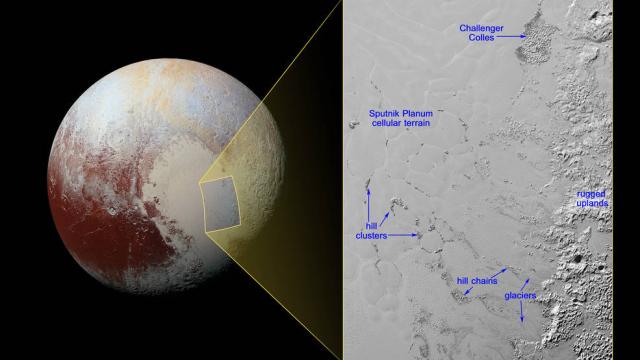Something strange has been happening on the surface of Pluto. There’s a series of hills, each about a couple of kilometres across, and they appear to be moving.
NASA has an intriguing new explanation for the phenomenon: Those aren’t just hills that we’re seeing — they’re also icebergs. It’s certainly a tidy explanation, except for one issue. That surface that they’re floating on is also ice. So how does ice float on ice?
The theory of ice-on-ice movement on Pluto has been floating around NASA’s New Horizons team for over a month now, but this is the first time it’s been used to explain the movement of these particular hills. Essentially, this explanation works because there are two different types of ice that we’re seeing here: The nitrogen ice that is the most commonly found ice on Pluto and then something a little more familiar to us, water ice. The nitrogen ice is considerably denser than the standard ice.
What this means is that the hills can “float” in their positions, moving in a way that NASA researchers compared to icebergs in our own Arctic Ocean.
Top image: NASA/JHUAPL/SwRI
